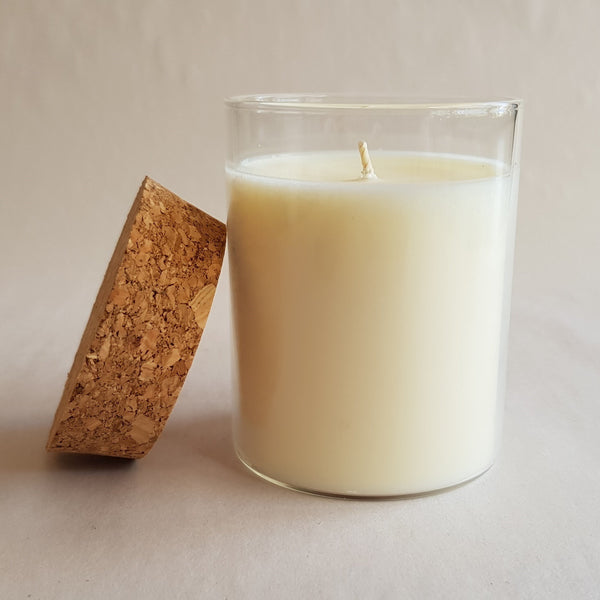Experience the Calmness of Crystal Soy Candles and Home Fragrance
Wiki Article
From Wick to Wax: Comprehending the Chemistry Behind Soy Wax Candles and Their Ecological Influence
As we illuminate our spaces with the cozy radiance of candle lights, there exists a realm of detailed chemistry behind the apparently straightforward act of lighting a soy wax candle. The option in between soy and paraffin wax extends beyond plain visual appeals, diving right into the realm of environmental effect and the really composition of the materials. Comprehending the molecular structure of soy wax and its burning procedure drops light on the emissions released right into our surroundings. Join us as we decipher the clinical intricacies behind soy wax candles and explore their implications on our environment.Soy Wax Vs. Paraffin Wax
When contrasting soy wax and paraffin wax for candle making, it is necessary to understand the distinctive characteristics and benefits of each material. Soy wax is a natural, sustainable source originated from soybean oil, making it eco-friendly and eco-friendly - soy wax candles. In comparison, paraffin wax is a by-product of petroleum refining, which raises concerns concerning its environmental influence and sustainabilitySoy wax candles shed cleaner and release much less soot compared to paraffin wax candle lights, making them a much healthier choice for interior air high quality. Furthermore, soy wax has a reduced melting factor, permitting a longer-lasting candle that disperses fragrance better. Paraffin wax, on the other hand, tends to melt faster and much less cleanly, possibly releasing hazardous chemicals into the air.
From a sustainability viewpoint, soy wax is favored for its biodegradability and renewable sourcing, straightening with the growing consumer preference for eco mindful products. While paraffin wax has actually been a traditional selection in candle making as a result of its cost and convenience of use, the change in the direction of environment-friendly options like soy wax is obtaining energy in the market.
Chemical Structure of Soy Wax
:max_bytes(150000):strip_icc()/SPR-types-of-Candle-Wax-5323778-hero-e4277e76885049a28707749d892fe592.jpg)
Combustion Refine in Soy Candles
The chemical composition of soy wax straight influences the burning procedure in soy candle lights, influencing factors such as melt time, fragrance release, and ecological influence. When a soy candle is lit, the heat from the fire thaws the wax near the wick.
The burning effectiveness of soy candle lights is influenced by the purity of the soy wax and the high quality of the wick. In addition, soy wax candle lights have a lower environmental effect contrasted to paraffin candles due to their eco-friendly and renewable nature.

Ecological Benefits of Soy Wax

Thought about a sustainable choice to traditional paraffin wax, soy wax offers significant ecological benefits that make it a preferred option among eco-conscious consumers. One significant benefit of soy wax is its renewable sourcing. Soy wax is obtained from soybean oil, which is mainly cultivated in the United States. The farming of soybeans aids support neighborhood farmers and lowers the dependence on non-renewable fossil fuels utilized in paraffin wax manufacturing. Furthermore, soy wax is naturally degradable, implying it breaks down normally without releasing unsafe contaminants right into the environment. This particular makes soy wax candle lights an extra eco-friendly option contrasted to paraffin wax candles, which are made from petroleum, a non-renewable resource. Soy wax burns cleaner and creates less residue than paraffin wax, contributing to much better interior air quality and lowering the need for cleansing and maintenance. On the whole, the ecological advantages of soy wax line up with the expanding need for eco-friendly and sustainable items in the marketplace.
Recycling and Disposal Factors To Consider
Reusing and correct disposal of soy wax candle lights play an important function in maintaining environmental sustainability and minimizing waste in houses and areas. When it comes to reusing soy wax candles, the initial action is to make sure that the candle light has actually burned entirely.
In terms of disposal, if recycling is not an option, soy wax candle lights are biodegradable and can be securely thrown away in most house waste systems. Nonetheless, it is constantly advised to consult local recycling centers or waste management services for particular standards on candle light disposal to guarantee correct handling and environmental protection.
Conclusion
In final thought, the chemistry behind soy wax candles reveals their ecological advantages over paraffin wax candles. Soy wax, originated from soybean oil, burns cleaner and produces much less soot when contrasted to paraffin wax. The combustion process in soy candle lights is a lot more efficient, bring about a longer and extra even burn. In addition, soy wax is eco-friendly and renewable, making it a much more sustainable selection for candle production. Reusing and proper disposal of soy wax candle lights even more add to their environmental effect.When contrasting soy wax and paraffin wax for candle light making, it is crucial to understand the distinctive characteristics and benefits of each material (candles).Soy wax candle lights melt cleaner and release much less soot compared to paraffin wax candle lights, making them a much healthier choice for indoor air top quality.Considered a sustainable alternative to traditional paraffin wax, soy wax offers significant environmental advantages that make it a preferred selection amongst eco-conscious customers. Soy wax burns cleaner and generates much less soot than paraffin wax, contributing to better indoor air top quality and lowering the need for cleansing and upkeep.In verdict, the chemistry behind soy wax candles discloses their environmental advantages over paraffin wax candles
Report this wiki page